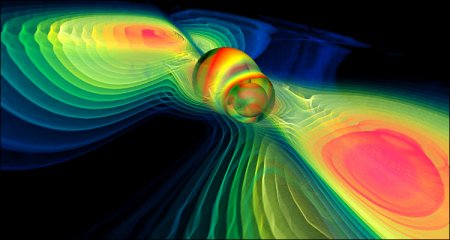
In physics, gravitational waves are ripples in the curvature of spacetime that propagate as a wave, traveling outward from the source. Predicted in 1916 by Albert Einstein to exist on the basis of his theory of general relativity, gravitational waves theoretically transport energy as gravitational radiation. Sources of detectable gravitational waves could possibly include binary star systems composed of white dwarfs, neutron stars, or black holes. The existence of gravitational waves is a possible consequence of the Lorentz invariance of general relativity since it brings the concept of a limiting speed of propagation of the physical interactions with it. Gravitational waves cannot exist in the Newtonian theory of gravitation, in which physical interactions propagate at infinite speed.
Although gravitational radiation has not been directly detected, there is indirect evidence for its existence. For example, the 1993 Nobel Prize in Physics was awarded for measurements of the Hulse–Taylor binary system that suggests gravitational waves are more than mathematical anomalies. Various gravitational wave detectors exist and on 17 March 2014, astronomers at the Harvard–Smithsonian Center for Astrophysics claimed that they had detected and produced “the first direct image of gravitational waves across the primordial sky” within the cosmic microwave background, providing strong evidence for inflation and the Big Bang. Peer review will be needed before there can be any scientific consensus about these new findings. On 19 June 2014, lowered confidence in confirming the cosmic inflation findings was reported.